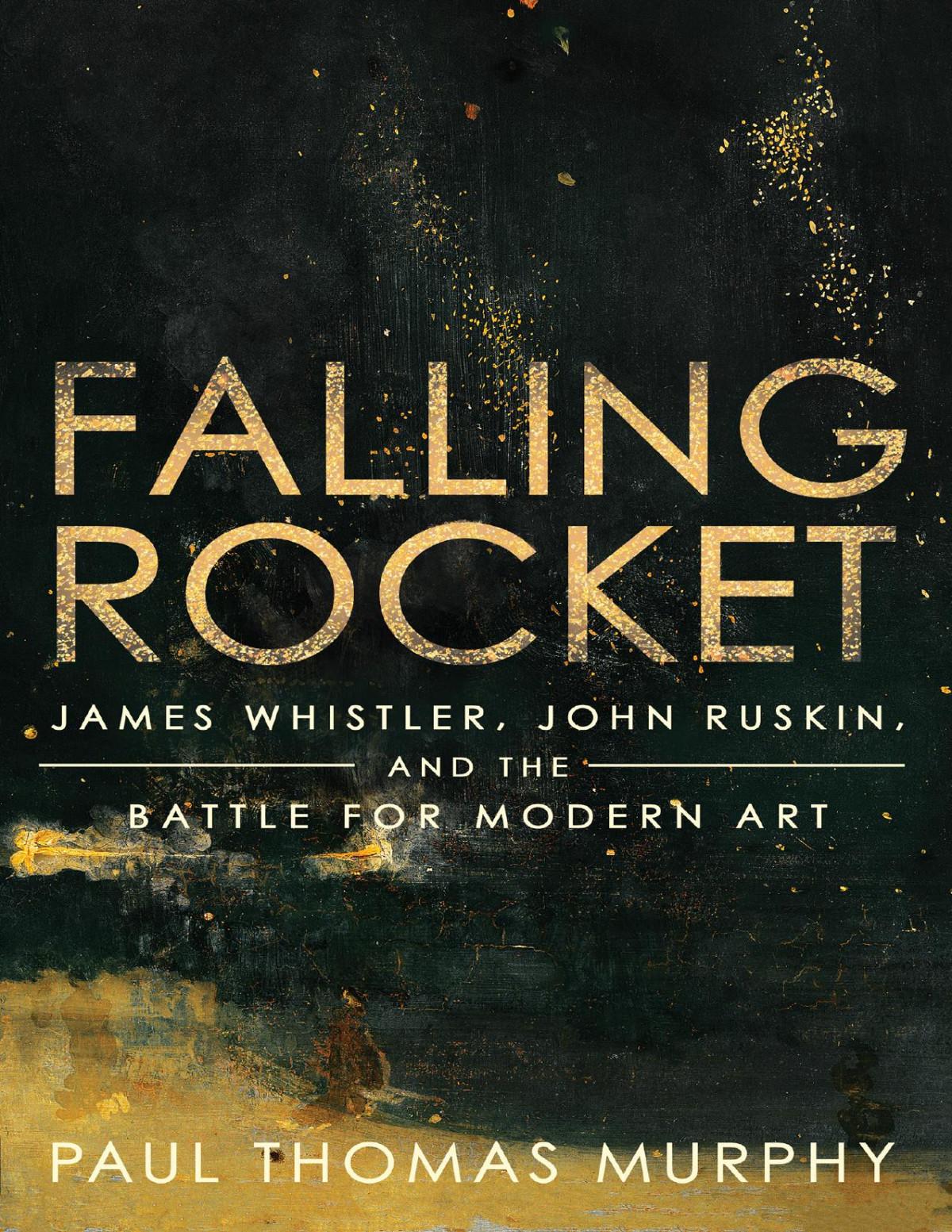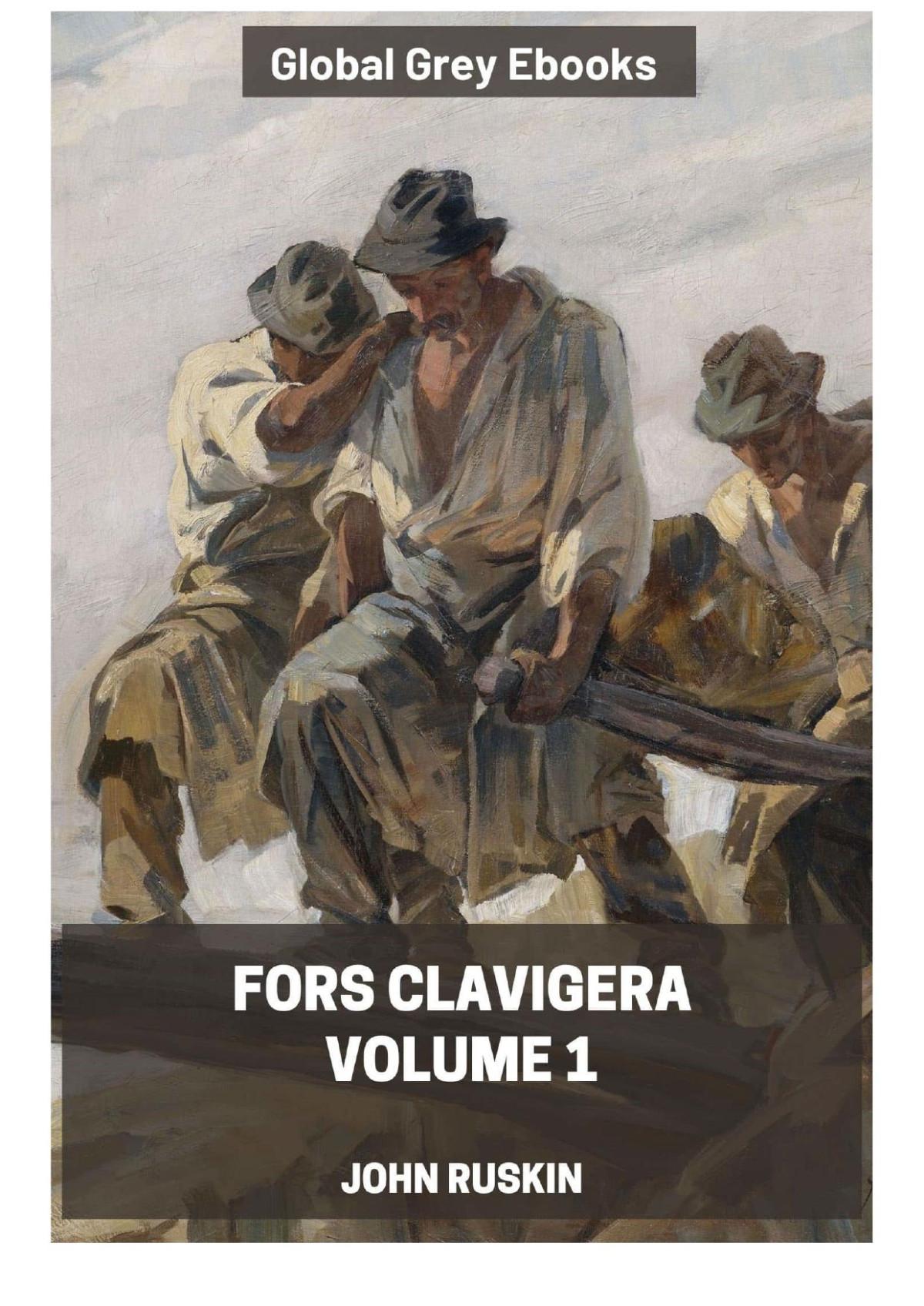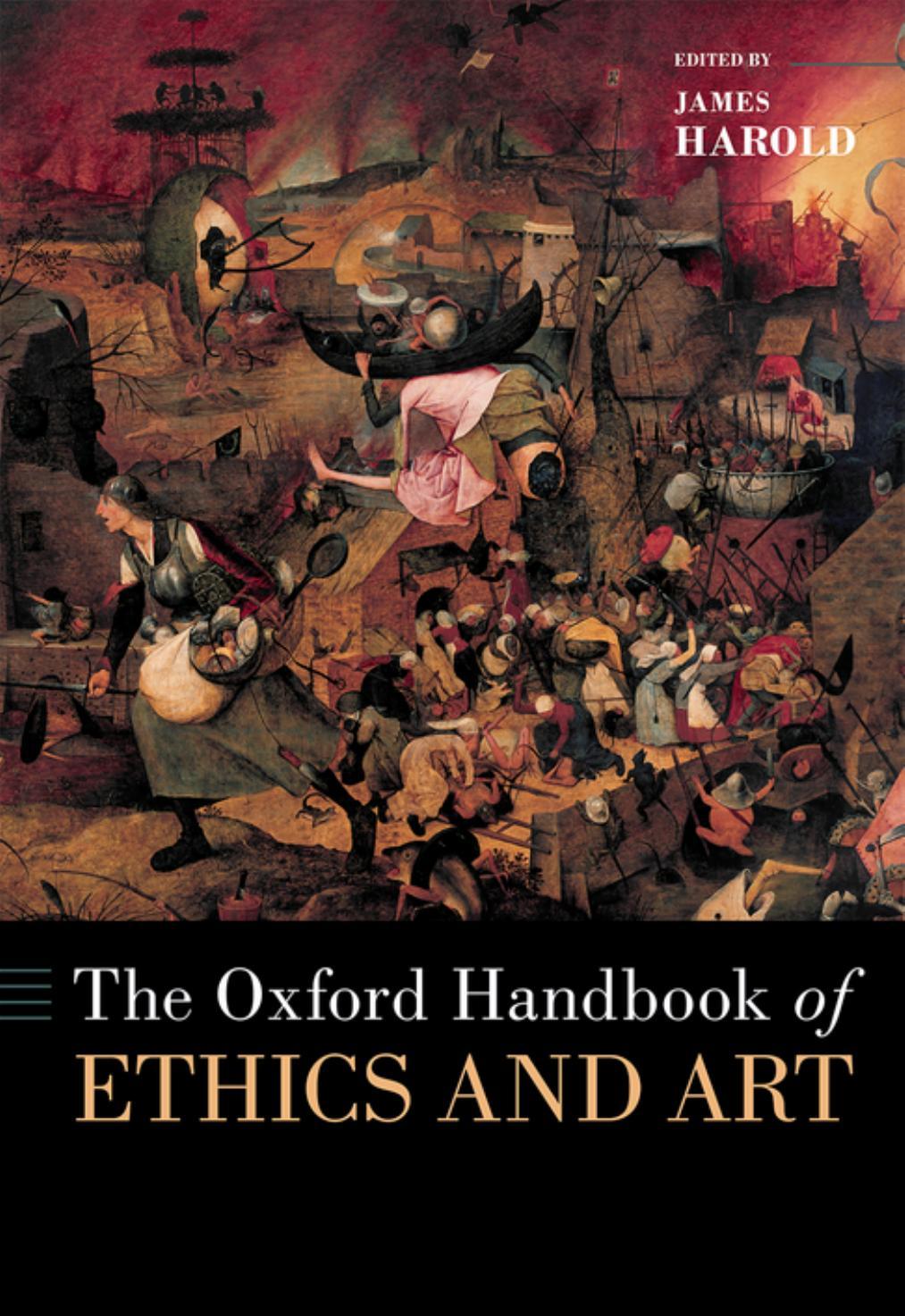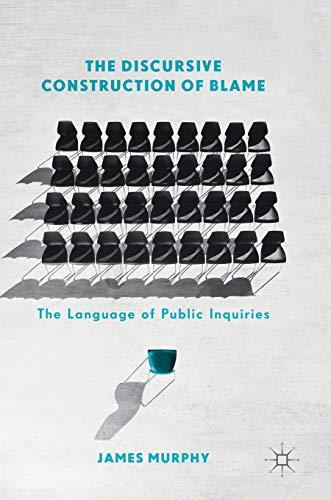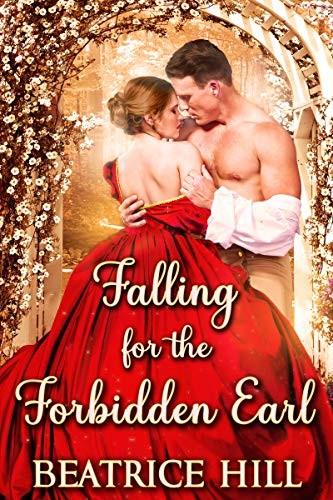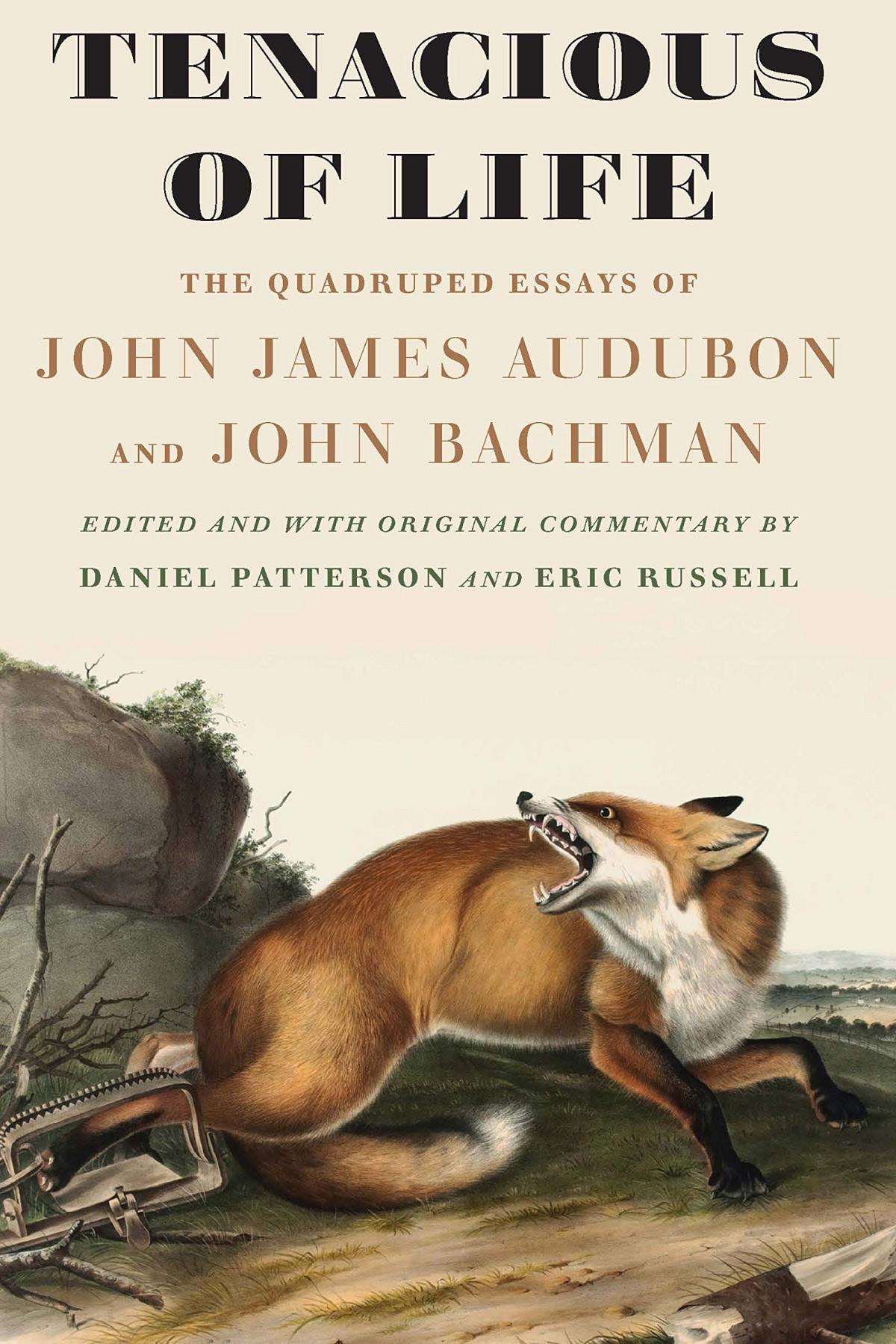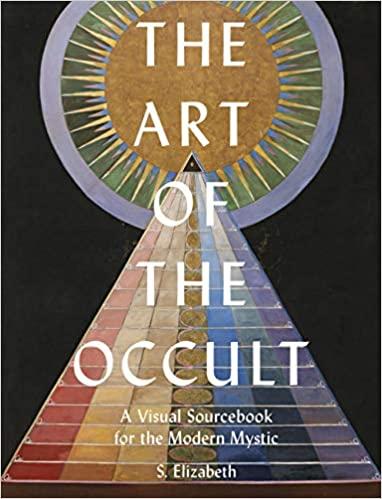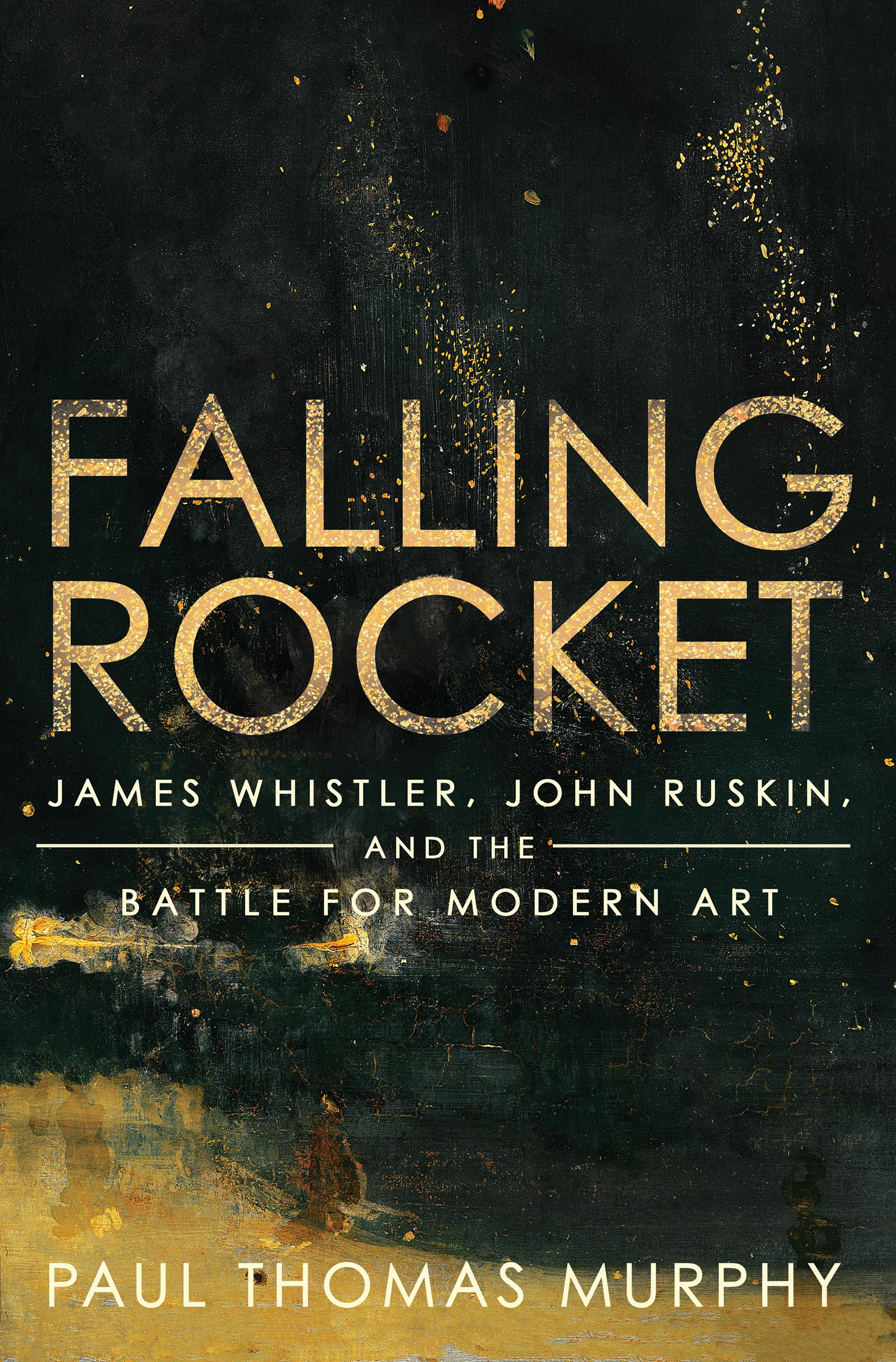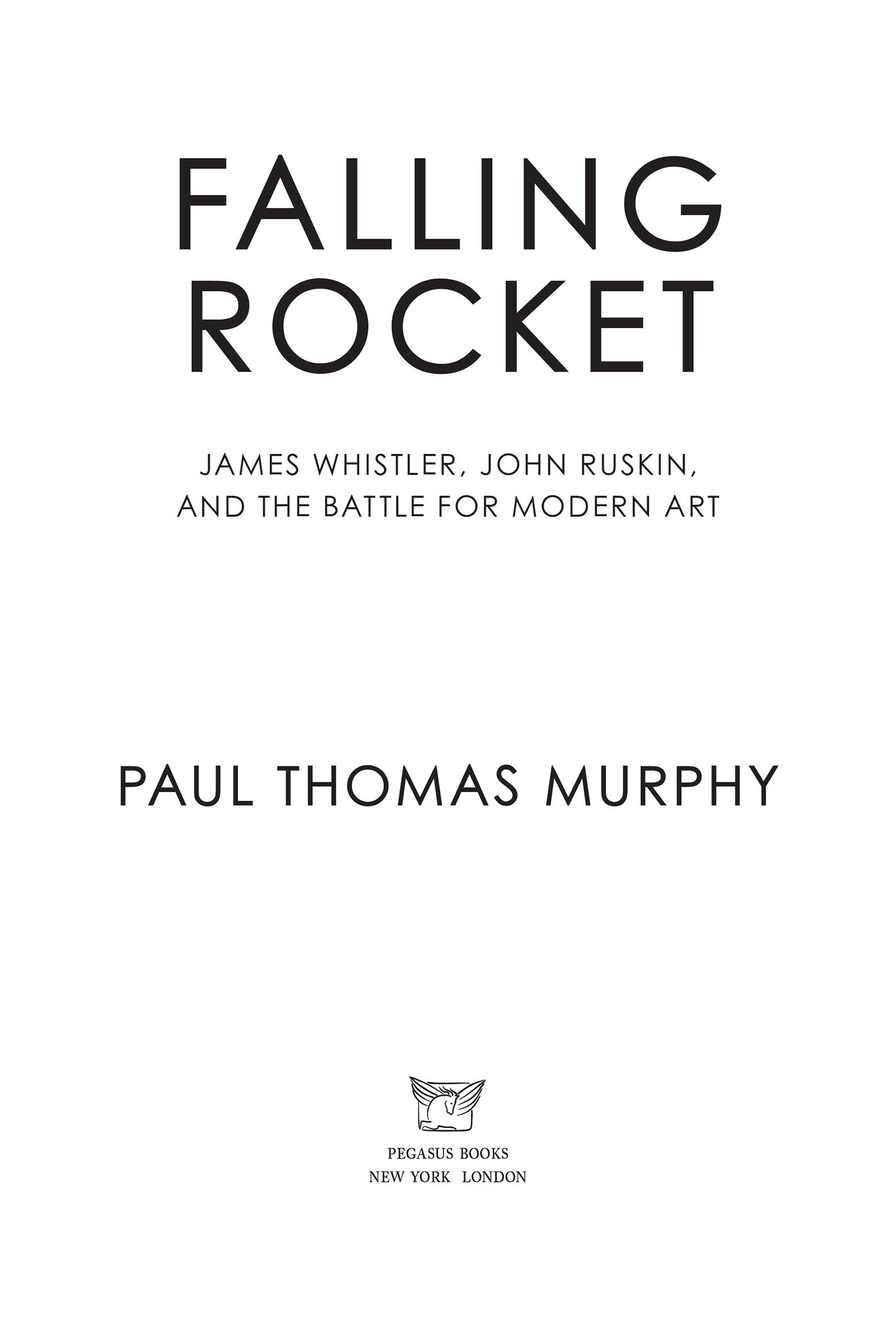WHISTLER’S MOTHER
In the summer of 1871 James Abbott McNeill Whistler achieved his immortality: he regained the con�dence he had lacked for years, perfected his distinct style, and suddenly—miraculously—began producing his greatest masterpieces. And when this happened, his mother was with him.
More than simply with him: Anna McNeill Whistler was instrumental in bringing about her Jemie’s trans�guration.
Whistler’s mother had come to London from the Confederate States of America seven years before. She was born a southerner in Wilmington, North Carolina, but for most of her adult life she had lived in the north—in Massachusetts, Connecticut, and New York. It was her second son, William, or Willie, who brought her south again. In 1860 Willie married a southerner, Ida Bayard King, and settled in Richmond, Virginia. In 1862 he joined the Confederate Army as an assistant surgeon. A year after that Ida fell fatally ill and Anna crossed enemy lines to tend to her until her death. After that, in the face of the appalling carnage of the Battle of Gettysburg, with Willie away at the front and conditions in Richmond deteriorating, Anna �ed for England. She boarded a steamship in the city of her birth, successfully ran the Union blockade, and in January 1864 landed in Portsmouth, England.
“General upheaval!!” James Whistler wrote of her arrival to his friend, Parisian artist Henri Fantin-Latour; “goings-on up to my neck!” For the past few months Whistler had lived at 7 Lindsey Row, on the Chelsea side of the �ames, sharing his home with French artist Alphonse Legros and Joanna “Jo” Hiffernan, his copper-haired Irish Catholic model, housekeeper, hostess, occasional agent, muse, and lover. He scrambled to
resettle Legros, �nd Jo a “buen ritiro” a mile away, and “to empty my house and purify it from cellar to attic!”
Contributing to the upheaval, Whistler was at that moment engaged in battle with his London relations. Since his teens Whistler had found a refuge at the affluent Sloane Street home of his half-sister (and his mother’s stepdaughter) Deborah, or Debo, and her husband, Francis Seymour Haden, a successful surgeon and, like Whistler, an extremely talented etcher. But over the years Haden’s insultingly patronizing attitude toward his much younger brother-in-law had corroded their relationship. Now, Haden’s overdelicate social sensibilities virtually destroyed it when he suddenly refused to have dinner at Whistler’s home if Jo were also there. Maddened by this insult, Whistler rushed to Sloane Street and confronted Haden in “ a great skirmish!” Haden threw Whistler out of his home and forbade his wife from seeing her brother at Lindsey Row.
Upon arriving, Anna complicated matters even further by immediately reintroducing her fervent Episcopal faith to her son ’ s morally relaxed world. “God answered my prayers for his welfare, by leading me here,” Anna wrote to an American friend a month after arriving. “I… do all I can to render his home as his father’s was. ” �at meant, more than anything else, restoring to her son the belief in an all-knowing and ever-immanent God. From her Jemie’s earliest childhood, Anna Whistler had struggled to inculcate that belief into him, instituting a strict daily routine of prayer and memorizing scripture, and instituting an even stricter observation of the Sabbath, which began on Saturday when Anna would empty her children’s pockets of any worldly distractions, hide their toys, and scrub them clean for Sunday a day of up to three sittings at church, shut off from visitors, any entertainment, and any reading beside the Bible. �e routine continued when Jemie moved with his family from Massachusetts to St. Petersburg, Russia, where Whistler’s father, George Washington Whistler, had taken on the daunting task of building the St. Petersburg–Moscow Railway (and where he died of cholera in 1849); there, Anna managed to press her son into evangelical advocacy, setting him to distribute religious tracts to passing Russian troops. Whenever young Jemie was away from his family, Anna barraged him with letters exhorting him to keep to the path of righteousness. When he was fourteen and a pupil at an English boarding school, she wrote beseeching him to “Love him & honor his day & study
His word & pray to him & dread to offend Him!” �ree years later when Jemie, following in his father’s footsteps, became a cadet at West Point, Anna clearly began to fear that he had strayed from the path. “Shew you have moral courage, by resisting idle examples,” she urged; “ none can work out your sancti�cation but yourself!” And when in 1855, twenty-one-yearold Whistler �ed America for the bohemian stir of Left Bank Paris, determined to become an artist, Anna’s hopes and fears for him were summed up, letter after letter, in one relentless refrain: “Oh Jemie keep innocency!”
But by then Jemie had long lost his innocency. During his schoolboy year in England he took to drink—or at least his parents feared he had. At West Point, he struggled academically but excelled at piling up demerits for idleness and for insubordination. At eighteen, Whistler was treated at the Academy’s in�rmary for gonorrhea—a fact of which his mother remained blissfully ignorant. After he was expelled from West Point, Whistler took a government job mapping for the US Coast Survey and quickly lost it, largely because of his complete refusal to abide by working hours. In Paris he devoted himself body and soul to the bohemian life; he took as mistresses �rst the spit�re Fumette and then the cancan dancer Finette and was much more interested in carousing with English and “ no shirt” French artist friends than in pursuing his lessons at the atelier of the painter Charles Gleyre.
But while Whistler had strayed from his mother’s path he found his own, abandoning her God for what he would later call his “whimsical goddess”: art. At ten, Whistler studied drawing at St. Petersburg’s Imperial Academy of Fine Arts, having already studied under a personal tutor from the Academy. At fourteen, he declared to his father his resolve to become a painter: “I wish to be one so very much and I don’t see why I should not, many others have done so before.” While he �oundered in most of his other classes at West Point, he excelled at drawing. During his short time at the US Coast Survey he mastered the skill of etching, an art form he had almost certainly dabbled in years before while living with his brother-in-law Seymour Haden. �ough he might have learned little in Paris from Charles Gleyre, the two lessons he did learn from him proved invaluable. First, he learned the practice of carefully choosing and arranging the limited colors of his palette before beginning: in effect, forcing himself to create a work
fully in his mind before translating it to canvas. Second, he adopted as gospel the conviction that the color black was a “universal harmoniser,” a part of and a basis for every other tone. His days and nights carousing with his young fellow artists were hardly time wasted, for they provided him with an intense schooling in art history and art theory, with constant debates about the opposed schools of Neoclassicism and Romanticism—the powerful lines of Ingres set against the glorious colors of Delacroix—and with discussions of the emerging school of Realism and its emphasis upon the accurate depiction of life. Realism’s best-known exponent, Gustave Courbet, Whistler had already met; later, the two would work together, and Whistler would even consider himself Courbet’s disciple for a time.
During his �nal days as a student in Paris in 1859, Whistler proved his irrevocable commitment to his whimsical goddess by creating the masterwork of his apprenticeship. At the Piano, Whistler’s portrait of his half-sister Debo playing while her daughter Annie watches, anticipates in many ways the great Whistler portraits that would follow over the next �ve decades, with its simple, careful arrangement and its limited and yet glorious sense of color: balanced black and white �gures of mother and daughter backed by golds, browns, and greens “reappearing continually here and there like the same thread in an embroidery,” as Whistler later described this central effect of his style. Whistler would not use the term “harmony” to title any of his paintings for years to come, but in At the Piano Whistler had created his �rst true harmony. Whistler submitted At the Piano to the prestigious Paris Salon of 1859. It was rejected. He then submitted it to the 1860 exhibition at London’s Royal Academy. 1860. It was accepted, and was a great success. It was “the most vigorous piece of colouring in this year ’ s exhibition,” lauded Tom Taylor, art critic for the Times. �e esteemed artist John Everett Millais concurred, telling Whistler that “I never �atter… but I will say that your picture is the �nest piece of colour that has been on the walls of the Royal Academy for years. ”
�e English success of At the Piano, its sale to a member of the Royal Academy, and the prospect of further commissions all motivated Whistler by 1860 to leave Paris and relocate to London. Before long he had discovered and taken up with seventeen-year-old Jo Hiffernan, and together they pursued his whimsical goddess to a place few had pursued her before: the seedy bankside of the industrial �ames. �ey moved into rough
quarters in Rotherhithe, where they lived, according to fellow artist George du Maurier, “ among a beastly set of cads and every possible annoyance and misery, doing one of the greatest chefs d’oeuvres no difficulty discourages him.” �is chef d’oeuvre Whistler called Wapping, a vignette of a prostitute (modelled by Jo) peddled by her pimp, the chaotic �ames shipping minutely detailed behind them. Wapping gave Whistler immense difficulty and discouraged him: he abandoned it for two and a half years, not �nishing it until his mother was there to see him do it.
By mid-1862 Whistler moved upriver to Chelsea, lured both by the �ames and by its growing community of artists. He and Jo took lodgings at 7a Queen’s Road, and in March 1863 they moved to 7 Lindsey Row, directly abutting the river and offering a view Whistler loved: a jumble of rowboats resting on the near bank, the dirty river beyond, bustling with ferries, pleasure boats, and lighters, and beyond that, across the woodenpiered Old Battersea Bridge, the gritty industry of Battersea itself �our and sawmills, turpentine and chemical works: raw industry softened for the Chelsea viewer both by distance and by London’s usual smoky fogs. �e rowboats belonged to his neighbor Charles Greaves, who lived two doors down with his salt-of-the-earth wife and children: “ a sort of Peggotty family,” Whistler said of them. As boatbuilder, oarsman, and ferryman, Charles Greaves had a generation before performed his own great service to high art: back when the great Joseph Mallord William Turner was his neighbor, Greaves had guided the aging artist, sometimes in the company of his aging mistress, on inspirational excursions about the �ames. Soon after moving in, Whistler found his own guides to the river in Greaves’s sons.
He came upon seventeen-year-old Henry and nineteen-year-old Walter Greaves by the riverbank, painting the scene while he watched. “Come over to my place,” he suddenly said. �ey did—and instantly became acolytes. “I lost my head over Whistler when I �rst met him and saw his painting,” Walter remembered. He never quite got it back again. For the rest of his long life long after Whistler eventually abandoned him Walter adored Whistler: dressing like him, adopting his mannerisms, imitating his painting style, and always looking back upon their years together as a golden age. For the next dozen years and more, Walter and Henry served Whistler with a slavish devotion; they were his unpaid assistants—but also his nonpaying pupils. �ey prepared his canvases, his paints, his frames;
they witnessed his often turbulent sessions with models; and they shared his techniques as they painted beside him Whistler painting from nature or his models; the Greaves brothers painting from his paintings.
“He taught us to paint,” Walter remembered, and “ we taught him the waterman’s jerk” taught him, in other words, to row the �ames. Within the next few years they would spend countless nights and early mornings on the river with Whistler, always the dandy, ostentatiously nautical in white trousers, blue coat, and a sailor’s hat. While they rowed, he sketched with black and white chalk on brown paper: upriver to Putney, downriver to Wapping—or simply rambling about the Chelsea and Battersea shores, where he could see the �reworks of nearby Cremorne Gardens rise up over the arch of Old Battersea Bridge. �e Greaves boys introduced him to the demimonde pleasures of Cremorne as well: its sideshows and pyrotechnics, its dancing by gaslight and shady bowers. He would sometimes go there with one of the Greaves’ sisters, sometimes with Jo, but always �anked by the brothers. �ere, too, he would sketch. �e Greaves home itself Whistler adopted as his haven, spending many evenings in the little parlor chatting, �irting with the girls, joking, dancing, and singing comic songs—and sketching, always sketching. When his mother arrived in Chelsea in early 1864, she quite happily joined him there.
From the moment she came to the newly puri�ed 7 Lindsey Row, Anna Whistler did her best to restore God to her Jemie’s life. She instituted nightly prayers and Bible reading for family and servants. She faithfully attended nearby Chelsea Old Church, which she chose for its “Evangelic spirit.” She insisted that her Jemie scrupulously honor the Sabbath by forgoing any socializing and refraining from all work—particularly from painting. Whistler benignly accepted her pervasive piety. But none of it had any effect upon his soul. Evening prayers hardly kept him from enjoying late nights with his artist friends or from prowling Cremorne’s profane paths. On Sundays he would dutifully accompany his mother to church and dutifully accompany her back home. While �rst, simply to please her, he would stay for the service, in time he did this less and less. And his relentless desire to create often overwhelmed her Sabbatarianism; one time
Anna, returning from church, was indignant to �nd that he had with the help of the Greaves brothers painted two great ships onto the hallway walls. If Whistler’s respect for his mother’s God was slight, Anna’s respect for his goddess was heartfelt and strong. Although ever-mindful of the world to come, Whistler’s mother was neither blind nor hostile to the beauty of this world, nor to her son ’ s extraordinarily sensitive appreciation of that beauty. Seeing her Jemie sketch not long after he began to walk and talk, she had done her best to cultivate his talent, visiting galleries, academies, and palaces on their travels to England and Russia, and introducing Jemie to artists such as Sir William Allen, who discerned in nine-year-old Jemie “ uncommon genius,” or the Academician William Boxall, who was commissioned in 1849 to paint fourteen-year-old Whistler—allowing the boy to see himself hanging at the Royal Academy’s exhibition later that year. While Anna responded cautiously when that same year Jemie vowed to be an artist, she supported his decision at twenty-one to study art in Paris perhaps because she knew very well that she couldn’t stop him. When Jemie created his �rst saleable art—twelve etchings that became known as the French Set Anna became her son ’ s most enthusiastic promoter, hawking sets to American friends and relatives. Now in Chelsea, immersed in her son ’ s artistic world, she convinced herself that in his worship of beauty Whistler actually served her God: “His is natural religion,” she wrote in 1872. “He thinks of God as the diffusive source of all he enjoys, in the glories of the �rmament, in the loveliness of �owers, in the noble studies of the human form. �e Creator of all!”
She clearly enjoyed being a part of her son ’ s world, even if she found it a bit dizzying at �rst. “�e Artistic circle in which he is only too popular, is visionary & unreal tho so fascinating,” she wrote a month after she arrived. It must have seemed to her as if all of London’s art world were making their way to Lindsey Row. Among visitors were those of the “Paris Gang,” with whom Whistler had played and worked in France Edward Poynter, �omas Lamont, Tom Armstrong, and George du Maurier. Alphonse Legros, the French artist whom Whistler had to relocate to make room for his mother, now visited regularly for a time. �ere was the circle of artists who lived and worked near Holland Park, including Frederick Leighton, George Watts, and Val Prinsep. One of Whistler’s earliest patrons, the Greek consul Alexander Ionides, came often, and so did his family, whom
Anna particularly liked. But the group that dwelt at the heart of Jemie’s artistic universe and would dwell there throughout the 1860s and into the 1870s was the “Rossetti lot,” as George du Maurier called them, enviously aware that they and Whistler were “ as thick as thieves.” In October 1862 Dante Gabriel Rossetti, haunted by the disturbing memories of his wife Elizabeth Siddal’s suicide, had �ed Blackfriars for Chelsea and the palatial Tudor House, a short walk downriver from the Whistlers. Rossetti brought with him roommates: his brother William Michael Rossetti, the writer George Meredith, and the wildly free-spirited poet Algernon Charles Swinburne. Although that arrangement did not last, his brother William and Swinburne remained constant visitors. To ward off recurrent melancholy, Rossetti surrounded himself with an overabundance of exotic furnishings and an ill-managed menagerie that included wombats, kangaroos, and peacocks; installed his mistress Fanny Cornforth as fallen angel of the house; and opened Tudor House to a host of companions: �rstand second-generation Pre-Raphaelites, budding Aesthetes, collectors, enthusiasts, and hangers-on. Frequent visitors included the artists Ford Madox Brown, William Morris, Edward Burne-Jones, William Bell Scott, and Frederick Sandys. �e dealer Murray Marks did his best to keep Tudor House overfurnished. James Anderson Rose came as a friend and a collector, but also as Rossetti’s solicitor: he soon became Whistler’s—and Whistler’s mother’s. A continual presence, as well, was the inimitable Charles Augustus Howell, the fabulously inventive storyteller and liar, the schemer with a hand in everyone ’ s business, and, at times, the masterful agent to Rossetti and later to Whistler. “It was easier to get involved with Howell than to get rid of him,” Whistler claimed. Finally, there was the one frequent guest to Tudor House that Whistler somehow managed not to meet: John Ruskin, once Rossetti’s and the Pre-Raphaelites’ staunchest supporter, unquestionably England’s top art critic, and, more recently, irrepressible, thundering social critic and modern prophet.
At Tudor House Whistler could rendezvous with Jo and indulge until the early hours in conversation lubricated by drink. Anna, given Tudor House’s bachelor atmosphere and her own perpetual and respectable widowhood, never visited. Instead, Tudor House came to her. Of the entire Rossetti lot, the one to whom she most warmed and who warmed most to her was Swinburne. It seemed on its face an odd affinity—the stolid,
abstemious, devout widow and the wildly exuberant young man, the unabashed pagan, the alcoholic, the ardent �agellant. But Swinburne saved his excesses for elsewhere: his naked horseplay for Tudor House, his alcoholic scenes for the street or his clubs, his profounder blasphemies for his poetry, and his sessions under the lash for two understanding prostitutes in St. John’s Wood. At Lindsey Row and in Anna’s sobering presence, Swinburne was partly a gentleman and partly a boy in need of mothering mothering that Anna willingly gave him. He was for a time her “Algernon.” She was known to lecture him parentally on the evils of alcohol. When he suffered a convulsive �t in her home, it was Anna who nursed him.
When Anna arrived in Chelsea, the Rossetti lot were in the clutches of a mania one Whistler himself had provoked. “�is Artistic abode of my son, is ornamented by a very rare collection of Japanese & Chinese,” she wrote of his porcelain; “his companions (Artists) who resort here for an evening relaxation occasionally, get enthusiastic as they handle & examine the curious subjects portrayed, some of the pieces more than two centuries old; he has also a Japanese book of painting, unique in their estimation.” Whistler was in Paris in the years after Japan’s forced opening to western trade, when a growing stream of oriental art and artifacts attracted the attention of French artists. His acquaintances there the etcher Félix Bracquemond and his printer Auguste Delâtre—began collecting woodcuts by the great Ukiyo-e artists Hokusai and Hiroshige. By the time Whistler moved to Chelsea, he was an avid collector of these, and more. �e fever spread; Dante Gabriel Rossetti in particular competed with Whistler to procure the best blue and white china available.
Whistler’s study of Japanese art had long in�uenced his style; At the Piano, in particular, demonstrates a debt to the Japanese print, with its deliberate �atness, its emphatic verticals and horizontals, its limited palette, and its harmonious repetition of color. But by the end of 1863 Whistler’s passion with Japonisme took on a new form as he began to produce paintings that did not simply re�ect oriental technique, but burst with Asian ornament: fans, kimonos, blue and white china, carpets, prints, and screens. He was working on three of these paintings when his mother arrived. Anna described the �rst: “A girl seated as if intent upon painting a beautiful jar which she rests on her lap, a quiet & easy attitude, she sits beside a shelf which is covered with Chinese Matting a buff color, upon
which several pieces of China & a pretty fan are arranged as if for purchasers.…” �e girl was Jo, though as far as Anna was concerned she was simply one of Whistler’s several models. �e painting is �e Lange Leizen of the Six Marks, the marks referring to the Chinese characters painted on the bottom of Chinese vases. For his painting La Princesse du Pays de la Porcelaine (�e Princess of the Country of Porcelain), Whistler employed a colorful, kaleidoscopic collection of Asian artifacts—salmon robe, silver kimono, blue carpet, mottled screen, and fan to set off the stunning model Christine Spartali, a Greek beauty Whistler had met through the Ionides family. Twice a week in early 1864 Spartali, always accompanied by her sister Maria, would come to pose for Whistler. Anna assisted, providing an “American” lunch at 2:00: champagne, roast pheasant, tomato salad, and apricots and cream, according to one menu. Maria Spartali was struck by Whistler’s sincere devotion to his mother, as well as by Anna’s calm dignity.
�e third painting Anna describes as well: “ a group in Oriental costume on a balcony, a tea equipage of the old China, the[y] look out upon a river, with a town in the distance.…” �is was �e Balcony actually painted upon the Whistlers’ upstairs balcony. Again, Whistler broadened his palette, this time with four distinctly western models in varicolored Japanese clothing, weighed down with Japanese props. What differed in this painting was its distinctive background: nothing Japanese, but rather industrial London: a monochromatic rendition of the factories and smokestacks of Battersea, transformed by haze into something more exotic, more mysterious, more magical than the foreground with which it competes. �e Japonaiserie of �e Balcony re�ects the phase that Whistler was going through. �e view beyond, however, offers a hint to Whistler’s artistic future.
Whistler’s embarking simultaneously upon three paintings of such color and variety suggests that his mother came at an inspired and productive point in his career. Actually, his career was entering a prolonged period of doubt and frustration. He confessed as much to Henri Fantin-Latour: “I should like to talk to you about myself and my own painting—But at this moment I am so discouraged always the same thing—always such painful and uncertain work! I am so slow!” Slowness, however, was never really Whistler’s problem. �roughout his career, Whistler demonstrated again and again that, once he carefully chose and laid out his paints on his table-
sized palette, he could compose and �ll out, with remarkable �nish, an entire canvas in one sitting. His problem now was a crippling lack of con�dence. Whistler was an obsessive perfectionist, and if a painting fell short of his expectations in any way, he would rub it down and begin again and again, and again. “I wipe off so much!” he complained to FantinLatour about Lange Leizen. And although he was adept at hiding from his Chelsea companions his lack of con�dence with his relentless swagger, his vivacity, his brilliant and dominating presence in any room, his mother could see it: “ no wonder Jemie is not a rapid painter,” she wrote to a friend, “for his conceptions are so nice, he takes out & puts in over & oft until his genius is satis�ed.” He had genius, certainly—but a fragile one hampered by insecurity. Of all his paintings at this time, �e Balcony proved the most frustrating of all: reworked, abandoned, and altered, Whistler would not complete it for another six years.
For Whistler’s models and sitters, then and in the decades to come, posing was often an ordeal involving dozens of sessions aggravated by Whistler’s barking insistence that they be still for hours as he painted, scraped, and repainted. �at was certainly the case for Christine Spartali, sitting (or rather standing) for La Princesse du Pays de la Porcelaine. �e work went quickly at �rst, her sister Maria remembered, but soon began to drag; just when they thought Whistler nearly �nished, they would return to the studio to �nd that everything had to be done over. Whistler had a particular problem capturing Christine’s head, and insisted she stand without rest as he worked and reworked. Christine silently endured the fatigue as long as she could; in the end, she became ill, or pleaded illness, and stopped coming, forcing Whistler to have a model stand in for her in order to �nish the work.
In spite of the constant difficulties, Whistler persisted. He usually worked in his small studio upstairs in the back of the house, a sanctum sanctorum generally closed to his mother. “I am never admitted there, nor any one else but his models,” Anna wrote a prohibition she appreciated when, years later in their next home, she slipped and walked into Jemie’s studio unannounced to �nd a parlormaid “posing for ‘the all-over!’” Of all Whistler’s models, Jo Hiffernan was still his favourite. �ough an exile from Whistler’s home and his bed since Anna’s arrival, she remained a continual presence in his studio and remained ubiquitous in his art, posing for Lange
Leizen and almost certainly for �e Balcony. Before that, in the winter of 1862, Jo had posed for the painting Whistler later titled Symphony in White, No. 1: �e White Girl. Expressionless but wide-eyed, holding a drooping lily, Jo stands on a bearskin rug, her red hair blazing against her white dress and the white background. Whistler had great hopes for this painting and submitted it for the 1862 Royal Academy. It was rejected. He then submitted it for the 1863 Paris Salon. It was again rejected as were three�fths of all the paintings submitted. As a result of the vociferous protest that ensued, French emperor Napoleon III decreed an alternative exhibition, the Salon des Refusés. �ere, �e White Girl gained more attention than any other painting with the possible exception of Le Déjeuner sur l’herbe, Édouard Manet’s scandalous depiction of two women, nude and seminude, picnicking with two fully clothed men. �e White Girl was a painting whose apparently symbolic elements—the lily, the white dress, the grinning bear at Jo’s feet begged for interpretation, for reduction to a narrative. But Whistler detested storytelling art, detested the sentimental narratives that informed and inspired most of the paintings of his day including most Royal Academy paintings. A painting, he believed then and throughout his career, should be self-sufficient: beautiful within itself, not as the vehicle for a story or a moral. When, however, in the wake of the Royal Academy Exhibition, Whistler exhibited this painting in a small London gallery, critics and the public could not help but see it as an illustration from �ction because the gallery’s owner mistakenly titled it �e Woman in White the title of Wilkie Collins’s novel, hugely popular at the time. A reviewer in �e Athenæum was scathing: the painting was “bizarre” and “ one of the most incomplete paintings we have ever met with.” Worst of all, “the face is well done, but it is not that of Mr. Wilkie Collins’s ‘Woman in White.’” Whistler quickly shot off a letter to the editor in response, repudiating any narrative intent: “I had no intention whatsoever of illustrating Mr. Wilkie Collins’s novel; it so happens, indeed, that I have never read it. My painting simply represents a girl dressed in white standing in front of a white curtain.” �at was the �rst—and perhaps the politest—of Whistler’s many attempts to shape his image through his letters to the press. When in late 1864 his mother, in poor health, left Lindsey Row for a stay in Torquay, Whistler brought Jo back to live with him and to pose for two more paintings. �e �rst, �e Golden Screen, is yet another fully loaded
Asian fantasy: a kimonoed Jo sits on an oriental rug before a Japanese painted screen, next to a blue and white pot, contemplating a Hiroshige print. For the second, later titled Symphony in White, No. 2: �e Little White Girl, Whistler brought Jo out of the studio and down to the drawing room, where she posed before the �replace. In contrast to the Japonaiserie excess of his recent paintings, in this one Whistler showed remarkable restraint. �e Asian elements are there, but are peripheral: two vases on the mantel, a Hiroshige fan in Jo’s hand, a spray of azaleas in the foreground. As in �e White Girl, simple whiteness predominates: in the dress, the mantelpiece. Jo stands in repose, her head, turned toward the mirror, conveying a distinct sense of melancholy a melancholy even more pronounced in her re�ected image. Strikingly, she wears a wedding ring, something that Whistler in reality never gave her.
�e Little White Girl clearly aims for a self-contained depiction of pensive beauty and could not be mistaken as an illustration or depiction of any story, as �e White Girl had been mistaken. Algernon Swinburne, however, was so deeply impressed by the painting that it became the basis for his poem “Before the Mirror,” two verses of which Whistler appended to its frame. Swinburne sent a copy of this poem to John Ruskin, his friend through Dante Gabriel Rossetti, and in an accompanying letter Swinburne praised Whistler’s painting to the skies: “whatever merit my song may have, it is not so complete in beauty, in tenderness and signi�cance, in exquisite execution and delicate strength as Whistler’s picture.” He exhorted Ruskin to come with him, Edward Burne-Jones, and Charles Howell to Whistler’s studio to view his paintings. “Whistler (as any artist worthy of his rank must be) is of course desirous to meet you, and to let you see his immediate work… If I could get Whistler, Jones and Howell to meet you, I think we might so far cozen the Supreme Powers as for once to realise a few not unpleasant hours.” Some kind of gathering might or might not have ensued, but John Ruskin took no part in it. Whistler exhibited Symphony in White, No. 2: �e Little White Girl at the 1865 Royal Academy exhibition, where reviews were at best lukewarm, and after that at the Paris salon, where they were decidedly negative.
Also on display at the Royal Academy that year was a painting that mesmerized Whistler: �e Marble Seat, a depiction of three women in classical dress reposing on a bench, languidly eyeing a naked youth pouring
wine from a pitcher into a kylix. It was painted by twenty-four-year-old artist Albert Moore, whom Whistler may already have met; certainly he was familiar with Moore’s work. But this work was different than anything by Moore he had yet seen. With its studied interplay of color, its linear rhythms, its refusal to �t any narrative, �e Marble Seat demonstrated signi�cant shared concerns with Whistler’s work. But Whistler also could see a technical virtuosity in Moore’s painting exceeding anything he himself had achieved. Viewers today might be hard-pressed to understand the novelty and the signi�cance that Whistler and others saw in this work. But in 1865, �e Marble Seat was a revolution and a revelation: as an uncompromising declaration of the power of art for art’s sake, it was a foundational work of the Aesthetic movement. Algernon Swinburne, writing three years later of another of Moore’s paintings, Azaleas, captured what Whistler saw in �e Marble Seat:
… of all the few great or the many good painters now at work among us, no one has so keen and clear a sense of this absolute beauty as Mr. Albert Moore. His painting is to artists what the verse of �eophile Gautier is to poets; the faultless and secure expression of an exclusive worship of things formally beautiful. �at contents them; they leave to others the labours and the joys of thought or passion. �e outlines of their work are pure, decisive, distinct; its colour is of the full sunlight. �is picture of “Azaleas” is as good a type as need be of their manner of work.… �e melody of colour, the symphony of form is complete: one more beautiful thing is achieved, one more delight is born into the world; and its meaning is beauty; and its reason for being is to be.
During his Paris days, Whistler had formed with French artists Henri Fantin-Latour and Alphonse Legros the Société des Trois, more a mutual admiration society than an artistic movement. After seeing �e Marble Seat, he proposed to Fantin-Latour a reformulation of that society: throwing out Legros “ a bit of a mongrel!” Whistler now called him—and bringing in the “ one other worthy of us ” : Albert Moore. “Oh Fantin I know so little!” he had declared in despair a year before; now he began to think that this
young artist seven years his junior—offered a solution to his problems. He sought out Moore in his Fitzroy Street studio and began to spend a great deal of time there, studying Moore’s methods and �nding inspiration for his own work. Moore’s in�uence can clearly be seen in Whistler’s Symphony in White, No. 3, which he began later that year. In it, Whistler retained the white on white palette of the two earlier symphonies �e White Girl and �e Little White Girl but radically reconsidered his composition to re�ect Moore’s, draping his two models (one of them Jo) with determined, even contorted languor about a sheet-shrouded sofa (rather than a marble bench). For Whistler, this was a breakthrough: “I feel I am reaching the goal that I set myself,” he wrote to Fantin. “I am now fully conscious of everything I am doing! So from day to day everything is getting simple and now, I’m particularly occupied with composition.” Signi�cantly, this was the �rst painting to which Whistler actually gave a musical title; the other two Symphonies in white and other earlier works he then retroactively renamed similarly to emphasize his commitment to pure aestheticism, to evocative arrangement rather than narrative depiction. Titling his works Harmonies, Symphonies, Notes, Arrangements, and Caprices quickly became Whistler’s convention: an affront and a source of amusement to public and critics, and fodder for Punch magazine.
In 1865, the Whistler family was reunited; Willie joined his mother and brother in London after a journey more harrowing than his mother’s. Deciding to spend a four-month furlough from the Confederate army in London, carrying dispatches for Confederate agents in England and failing to run the Union naval blockade, Willie risked execution as a spy by crossing enemy lines. He made his way to New York and took ship for Liverpool. Just a week after he arrived in London, Lee surrendered at Appomattox and the Confederacy fell. With no reason to return, Willie settled in London to pursue his surgical career. Like his brother, Willie never returned to the United States. From the moment Willie arrived, the two brothers were “almost inseparable,” according to Anna, as Whistler integrated Willie into London’s art world, with frequent visits in particular to Tudor House, where the Whistler and Rossetti brothers formed similarly
odd pairs: Jemie and Dante Gabriel ebullient, expressive, impulsive; Willie and William Michael sober, reserved, deliberate.
With sound medical training and as yet no license to practice in England, Willie had the ability and time to attend to his mother’s worsening health, particularly to her deteriorating eyesight. In September, he brought her for treatment to a spa at Malvern, and after that to Koblenz to visit a celebrated oculist. Whistler accompanied them to Germany, but he quickly slipped away to join Jo in Trouville on the coast of Normandy, where, needing the money, he hoped to produce some saleable seascapes. �ere, apparently unexpectedly, he and Jo met Gustave Courbet. �at autumn the two artists painted the sea together. In the evenings, Jo “played the clown to amuse us, ” sang Irish songs, and managed to work her way into Courbet’s heart. Courbet now referred to Whistler as “ my pupil.” Once, Whistler too had seen himself that way, but his work of that summer indicates his profound departure from Courbet’s realism. While Courbet in his own seascapes recreated what he saw with meticulous, textured detail, Whistler aimed not to recreate but to evoke: thinning his oils to watercolor consistency, he washed in with broad, visible brushstrokes horizontal bands of color suggesting beach, sea, and sky, but also veering toward abstract arrangements of forms. He was experimenting with a style that was neither Courbet’s nor Moore’s but entirely his own.
Whistler returned to London in mid-November, and soon afterward Willie embroiled him in the most bizarre episode of his life. Willie was one of many rootless Confederate expatriates in London. Another was Henry Doty, an acquaintance of Willie’s who had designed torpedoes for the Confederate navy. Doty, eager to put his exclusive skills to mercenary use, found his opportunity when in September 1865 Chile, bullied by the Spanish navy, declared war upon Spain. In January 1866 Chile contracted Doty to build torpedoes and torpedo boats for the Chilean navy, assemble a crew to ship them, and destroy the Spanish naval force then blockading the city of Valparaiso. Doty recruited Willie; Willie brought his brother in. Whistler could hardly have had any political motive for joining the expedition. But his years at West Point had given him an unrealistic and lifelong belief in his own military ability, and he almost certainly reveled in the notion of playing the soldier, especially after having sat out the American Civil War. More importantly, he needed the money. At a time
when he found it difficult both to produce and to sell his art, the expedition offered the enticing prospect of a steady wage, travel and living expenses, and a hefty commission if they succeeded. Whistler agreed to be Doty’s secretary. While Doty and crew made their way west around Cape Horn, Whistler would travel more directly to Chile across Panama, escorting Doty’s wife to Valparaiso, where he would then take note of naval and diplomatic movements in advance of Doty’s arrival. Willie Whistler, on the other hand, fell away from the mission, most likely because as an unrepentant Confederate he could not obtain the US passport he needed to travel to South America. After making a will leaving everything to Jo and after farming out his mother to the Hadens, Whistler set out for Valparaiso in January 1866.
He and Mrs. Doty slipped into the city in early March to �nd its harbor blockaded by an eight-ship Spanish squadron. Ships from the US, Britain, France, Russia, and Sweden were also anchored there in the hope of negotiating a truce and reopening the trade route. Whistler—with his good French and his passable Spanish and Russian set about spying, �lling out a notebook with gleanings from officials and officers, and traveling by rail and horseback about Chile and Chile’s ally Peru: he got at least as far as Lima. On the last morning of March Whistler, back in Valparaiso, saw his �rst and only military action when for three hours Spanish ships bombarded the city. Whistler had taken refuge in the hills with city officials, and when a Spanish ship �red a single shell in their direction, they panicked: “I and the officials turned and rode as hard as we could, anyhow, anywhere.” Later in the day they returned to Valparaiso to �nd that “all the little girls of the town had turned out, waiting for us, and, as we rode in, called us Cowards!” When soon afterward the Spanish squadron sailed north to Peru, that was in effect the end of his mission and the end of any hopes for a hefty commission. Doty and the torpedoes, however, were still four months away, and Whistler had little to do except wait, drink, smoke a mountain of cigars, and socialize with, borrow from, and apparently sleep with Mrs. Doty.
And to paint.
Five, perhaps six paintings survive from Whistler’s journey to Valparaiso. All are seascapes. And all, to a greater or lesser extent, show him experimenting as he had at Trouville, thinning his paints, working with
long, �uid, horizontal strokes, aiming to capture a mood rather than recreate reality. �e six form a series of sorts: studies of the ocean at different times of the day and night. �ree of them are tentative, conservative, tending toward the representational. But two are revolutionary. Crepuscule in Flesh Colour and Green: Valparaiso depicts war but evokes peace, with warships of several nations suspended in a delicate balance between gentle grey-green sea and blue-violet twilight sky. And Nocturne in Blue and Gold: Valparaiso Bay relies on a palette limited almost entirely to a single, indeterminate blue-grey-green, a color mixed with greater or lesser amounts of black to allow for limited de�nition—a dock with the merest suggestion of a crowd of human beings, an indeterminate number of ships, muted hills on the horizon. Visible sources of light in the painting are minimal yellow pinpricks on the ships and across the bay, a shower of sparks in the upper left corner and illuminate nothing. It was his very �rst nocturne, darkness forcing him toward abstraction.
In late July 1866 Doty �nally arrived in Valparaiso and precipitated the �nal, farcical collapse of the mission. He publicly accused Whistler of seducing Mrs. Doty, but when Whistler challenged him to a duel, he withdrew the accusation. �e Dotys soon left for England and Whistler followed a month later, animated by an angry, pugnacious spirit: an obsession with the not-so-gentle art of making enemies that would haunt him for months, that indeed would never quite leave him. On the voyage home he found a target in a luckless traveler from Haiti whom he derisively christened the “Marquis of Marmalade,” who “made himself… obnoxious to me, by nothing in particular except his swagger and his colour.” When this man dared share his meal with the other passengers, Whistler kicked him across the deck and down the companionway stairs. When Whistler later regaled his Tudor House friends with his account of this assault, William Rossetti, appalled by Whistler’s blatant racism, expressed his disgust. Edward Burne-Jones, also there, “did not give vent to words of indignation,” William Rossetti remembered. “But the look of his countenance spoke volumes on the subject.” Con�ned to his cabin after the attack, Whistler the next day found his second victim: the ship’s mail agent, “ a strong abolitionist” according to Whistler, who gave him “ a long and impertinent sermon ” on his behavior. Whistler slapped him—and got his eye blackened in return. A �nal skirmish occurred when Whistler exited his
train at Waterloo Station. Henry Doty, somehow catching wind of Whistler’s arrival, confronted him there. For this “astounding impudence” Whistler punched Doty and, according to Doty, he paid the price: Doty struck him back and shouted “this is Whistler the artist, a scoundrel, a seducer, a betrayer of his trust; mark him!” upon which Whistler abandoned his baggage and took cover in the station’s cloakroom.
Whistler’s emotional turmoil did not end there. Back in London Whistler went to live with Jo in her buen ritiro, but that arrangement did not last long. While he had been away, Jo had apparently slipped over to Paris to serve as model and possibly lover to Gustave Courbet. While there she quite likely posed for Courbet’s Le Sommeil, a brazenly erotic depiction of two nude women sleeping locked in an embrace. Jo’s excursion could not have remained a secret for long, and Whistler could not have seen it as anything but a betrayal. In any case, around this time Jo abruptly ceased to be Whistler’s muse and model and their relationship cooled although it didn’t quite end. By Christmas Whistler had returned to Chelsea and the �ames, and to his mother.
�ey moved to a larger house on Lindsey Row, number 2, which Whistler quickly set to decorating with the same minimalist sensibility he was now bringing to his paintings, rejecting Victorian surfeit for sparsely furnished rooms and harmonious arrangements of color on the walls. �e dining room he painted blue, with darker blue dado and doors and with an accent of Japanese: “ a �uttering of purple fans.” �e parlor he painted dark red with black woodwork. His studio he painted grey with black doors and dado. �e drawing room he scrambled to �nish in early February 1867 before his �rst dinner party, calling upon the Greaves brothers to help him paint the walls, doors, and woodwork in a harmony of beige, pale yellow, and white. “We three worked like mad,” Walter Greaves said; he told Whistler the paint would never be dry in time. “What matter?” said Whistler, “it will be beautiful.” Later Walter Greaves heard that dinnerguests he was of course not one of them—left the house mottled with beige and yellow paint.
1867 was a rootless and anxious year for Whistler, a “whirl of excitement of ambition and hopes and disappointments and bitterness,” he wrote to his mother from Paris that spring, as he shuttled back and forth between there and London, promoting himself in exhibitions in both capitals. Most of the
paintings he managed to show were older ones. He did exhibit one of his Valparaiso paintings, Crepuscule in Flesh-Colour and Green, with several others at the Paris Exposition Universelle, but there all his paintings were hung so badly that “they have been more or less damned by every body.” Although he did have a “complete success ” at the Salon, the two paintings he showed there At the Piano and �e �ames in Ice dated from the beginning of his career. At the Royal Academy he showed three paintings, including Symphony in White, No. 3. �at marked the public debut of his �rst musically titled work and therefore offered the critics their �rst opportunity to attack his titles as evasive, pretentious, and altogether silly. Or inaccurate: Philip Hamerton of �e Saturday Review noted that Symphony in White, No. 3 “is not precisely a symphony in white” since it contained a yellowish dress, brown hair, a blue ribbon, and so on. Whistler lashed back, shooting off a letter to the editor that �e Saturday Review chose not to publish: “Bon Dieu! did this wise person expect white hair and chalked faces? And does he then, in his astounding consequence, believe that a symphony in F contains no other note, but shall be a continued repetition of F F F?… Fool!”
He lashed out physically as well. �at April, while visiting his friend Luke Ionides at his office, Whistler came upon his ex-friend Alphonse Legros. �e two had apparently quarreled about money before Whistler left for Valparaiso, and now they quarreled again; when Legros suggested that Whistler was a liar, Whistler thrashed him “covered me in wounds,” Legros claimed. News of the assault split London’s art world; Whistler’s relationship with Rossetti cooled and Burne-Jones was particularly enraged, wanting to “call in the police.” Just days after this, in Paris with his brother Willie, Whistler turned on his brother-in-law Seymour Haden. �ough he hardly needed any new reasons to despise Haden, he found some anyway: Haden had, in Whistler’s opinion, been slandering his recently dead partner, a man named James Traer, whom Whistler now claimed as his own very good friend. More than this, Haden, in Paris to organize Traer’s funeral, had as far as the Whistlers were concerned made miserly and disrespectful arrangements; Traer’s was the funeral “of a dog got rid of,” according to Willie. Coming upon Haden in a Paris café, Whistler shoved him through a plate-glass window. Haden returned to London seething, determined to have his brother-in-law expelled from the Burlington Fine
Arts Club, of which they were both members. Several months later, having carefully documented Whistler’s string of assaults from Valparaiso to Paris, he succeeded. Again the art world took sides, William and Dante Gabriel Rossetti immediately resigning from the Burlington in sympathy with Whistler. Whistler’s family, too, was split: Anna informed Debo “I can never again enter the door of 62 Sloane St.” Whistler and Haden never spoke again.
Whistler’s outwardly directed rage at this time was more than matched by rage directed inward, as overwhelming self-doubt threw him into the deepest crisis of his artistic career. He poured out his frustration that autumn in a self-lacerating confession to Henri Fantin-Latour, castigating himself as a failure, as nothing more than a “degenerate student,” and realizing that he could have been so much more if he had had the proper training. “Ah my dear Fantin,” he lamented, “what a frightful education I gave myself or rather what a terrible lack of education I feel I have had!” He had fallen under the spell of the wrong master. “Courbet! and his in�uence was odious!” Courbet’s brand of Realism, dictating depiction over evocation, had ruined him: “Where could you have found an apostle more ready to accept this theory, so appealing to him! this remedy for all disquiet What? All he had to do was to open his eyes and paint what was there in front of him! beautiful nature and the whole caboodle! that was all there was to it! and then people went to see it! And they saw—the piano, the White Girl, the �ames pictures—the seascapes… canvases produced by a nobody puffed up with pride at showing off his splendid gifts to other painters.…” �ough Whistler never doubted his incredible skill with color, he now perceived his art nevertheless to be a failure. Without a sure sense of line, without discipline in draftsmanship, color sense was worse than nothing. Color guided by line, he claimed, is “ a splendid bride with a spouse worthy of her,” and beauty came from the union. But without that, color was “ a swanky tart,” resulting in nothing but “chaos, or intoxication, of trickery, of regrets of un�nished things!”
“Oh, how I wish I had been a pupil of Ingres!” Whistler complained. Ingres, the great Classicist, the master of line and drawing: “how soundly he would have guided us!” It was too late for that, of course. But it was not too late for Whistler to commit himself to a reeducation under Britain’s modern master of line and form: more determinedly and energetically, more
obsessively than before, Whistler bound himself to the “exacting and demanding” style and method of Albert Moore. �is meant forgoing his usual spontaneity for endless preparation for every work: a multitude of sketches of live models, both nude and clothed, as well as sketches of Greek sculpture he made in an attempt to realize ideal rather than idiosyncratic beauty. Willie Whistler witnessed the ludicrous lengths his brother went to in forcing the classical upon his art. “It was his habit,” he remembered, “to pose his model beside a skeleton, with a bust of Venus de Milo at hand.” Now, like Moore, rather than paint as before upon a blank canvas, Whistler drew cartoons, full outlines on paper, and transferred these to his canvas by means of pinpricks and charcoal dust.
For two years Whistler worked in Moore’s thrall toward a speci�c goal a commission for a new patron, Frederick Leyland. Leyland, a shipping magnate and a “modern-day Medici” whom Whistler almost certainly met through Dante Gabriel Rossetti, who owned mansions both in London and outside of Liverpool, and who had both the wealth and the burning desire to saturate them with beauty, artworks both classical—Botticelli in particular and modern: Rossetti, Burne-Jones, and now Whistler. By August 1867 Leyland had commissioned Whistler to paint two works for 300 guineas each.I Whistler proposed as subject a fourth Symphony in White: three young women loosely draped in gowns neither Japanese nor classical but a hybrid of both, posing gracefully about a hothouse plant. �ree Girls, he called it.
Surviving studies for the �ree Girls reveal that Whistler’s genius for color had never been stronger, with blues, violets, and oranges woven into the prevailing whites. But the arrangement of the picture—and the arrangements of the several variations on this theme that Whistler sketched out at this time—were not Whistler’s at all, instead borrowing heavily from Albert Moore. Leyland likely never realized, and Whistler likely never admitted to himself, the suspicious resemblance between the arrangement of the �ree Girls and that of Moore’s Pomegranates, which Moore had painted just a year before.
Whistler intended to exhibit the �ree Girls at the 1868 Royal Academy exhibition, but that deadline came and went with nothing to show; he worked more obsessively than ever, but just as fruitlessly. “I am up to my
neck in work!” he wrote Fantin-Latour that September. Anna felt abandoned by her son as he shut himself up in his studio all day while she turned away visitors. He never worked harder. But for all of his work over those two years, he completed nothing, exhibited nothing—sold nothing. Frederick Leyland was an amazingly trusting and generous patron, paying whatever advances Whistler asked for the �ree Girls, eventually paying more than Whistler had asked for. But it was not enough; with costs for supplies and models “who must be paid,” it was a “continued outgoing and nothing coming in.” “We all & each have to be very prudent in our expenses, ” Anna wrote in December. But by then, Whistler had incurred a new one: frantic to complete the �ree Girls for the 1869 Royal Academy exhibition, he left his mother and moved to a room and a studio he rented from his friend, architect Frederick Jameson, at 62 Great Russell Street. �e house looked out on the British Museum with its inspirational Greek sculptures. More importantly, it was close to the studio of his master Albert Moore. �ere, from September until March 1869 Whistler strained to complete the �ree Girls, but Jameson dismally reported these months “unproductive and uneventful.” Whistler lived a Sisyphean nightmare, always nearing completion only to rub his canvas “down to the bed-rock” and start again. “I had a large picture of three �gures nearly life size fully underway,” Whistler wrote an American friend, “indeed far advanced towards completion the owner delighted and everyone highly pleased with it except myself. Instead of going on with it as it was, I wiped it clean out! Scraped it off the canvas and put it aside that I might perfect myself in certain knowledge that I should overcome imperfections I found in my work.…”
A month before the 1869 Royal Academy exhibition, he broke down. Realizing he would not �nish the �ree Girls or any of its variations in time to exhibit, he stopped working, instead wandering in despair with Jameson through London’s galleries and museums. On March 10 he surprised his mother at Lindsey Row and confessed his failure. “Leyland must be written to! but I cannot do it!” he told her. And so Anna wrote him. “It has become more & more impossible to satisfy himself,” she explained. She begged Leyland to allow her son to set aside the work altogether “til he should be in better tone,” and relayed her son ’ s offer to repay Leyland’s advance of £400. She offered her own analysis of his failure; God, she thought, was
rebuking her Jemie. “I could not but fear this check upon Jemie’s temerity in setting aside the divine wisdom of resting from labour on the Lord’s day. I failed in my argument to convince him that he should pro�t by the day of rest, not only to recover tone, but to seek the blessing promised to obedience. ” Whistler set aside the �ree Girls and all its variations. �at work would haunt him, and he would return to it. But he would never �nish it.
Whistler did try to make good on his debt to Leyland, begging for a loan �rst from his elder half-brother George, and then from �omas Winans, an American friend and one of his �rst patrons. But there is no evidence that he got money from either. Instead, Whistler and Leyland renegotiated: the �ree Girls was set aside and Whistler instead agreed to paint portraits of the Leylands, both parents and children. �ey likely brokered that deal that September when Whistler visited Speke Hall, Leyland’s new country estate, for the �rst time. He stayed a month and began work on Leyland’s portrait. And he brought his mother, who endeared herself to the Leylands by nursing several of their children back from bouts of scarlet fever. After this, the Whistlers became frequent and welcome visitors to the Leylands, both at Speke Hall and at their London mansion. �e failure of the �ree Girls did nothing to hamper their growing friendship.
When a year later in the autumn of 1870 Whistler returned to Speke Hall to work on Leyland’s portrait and to sketch the family, he found a way to break free from Albert Moore’s paralyzing technique. While he had for years shamelessly stolen ideas and subjects from Moore, his enormous yet fragile ego would never allow him to admit it. Instead, he accused Moore of stealing from him. Whistler had introduced Moore to Leyland, and Leyland had commissioned from Moore Shells, a study of a statuesque young woman on a windswept seashore. As it happened, Whistler had earlier set one of his �ree Girls variations on a windswept seashore. And when Leyland showed him Moore’s preliminary sketches for Shells, Whistler detected a resemblance between Moore’s subject and one of his own. Although even Whistler realized that the resemblance was slight, he wrote Moore a tentative yet clearly accusatory letter. He proposed that they have mutual friend William Nes�eld mediate by viewing the two works and deciding whether “ we may each paint our picture without harming each other in the opinion of those who do not understand us and might be our
natural enemies.” Moore, though surely bemused, agreed. Nes�eld examined both paintings and diplomatically stated the obvious: the “ effect & treatment” of the paintings were so different that Whistler and Moore could safely �nish their works. (Moore did; Whistler did not.) With that Whistler was, symbolically, free.
But he was not in the clear. He still struggled to complete a painting. �e portrait of Leyland drove him to distraction. Consumed with the difficulty of painting an atmospheric pitch-black background for Leyland’s pitch-black suit, he found himself in the same excruciating cycle of building up and rubbing down, while Leyland found posing for Whistler “ my own martyrdom.” Whistler nearly cried, Leyland remembered, over getting his legs right; in his frustration he regressed to Moore’s technique, hiring a nude model to remind him of the musculature beneath the trousers. Leyland’s martyrdom would continue, on and off, for another three years.
Whistler was by the end of the 1860s fading from the view of the public. In 1868 and 1869, he exhibited nothing. For the 1870 Royal Academy exhibition all he could muster was his seven-year-old �e Balcony, now reworked, renamed Variations in Flesh Colour and Green, and given one signi�cant innovation: signed not with a name but with an emblem of a butter�y, suggesting his free-spirited aestheticism, providing him with a new public identity. (Ironically, the idea may have come from Anna, decades before, as she begged her son to keep innocency: “I only warn you not to be a butter�y sporting about from one temptation to illness to another…”)
And then, in 1871, the work that gained him attention was not paintings, but etchings: sixteen etchings newly published as the �ames Set, though nearly all of them were at least a decade old.
Whistler’s chief new creation at this time was not painting or etching, but a child. Charles James Whistler Hanson was born on June 10, 1870, to Louisa Fanny Hanson, a twenty-one-year-old parlormaid from Clapham. How Whistler met her, exactly, is not known but he was captivated enough, apparently, to coax her to his studio to model. Whistler described his son as his “in�delity to Jo,” suggesting that while his relationship with Jo Hiffernan had cooled three years before, she still meant something to him. In the years to come, Jo was to mean a great deal more to Whistler’s son. For the �rst two years of his life, Charles Hanson was farmed out to a nurse, but after that Whistler entrusted his upbringing to Jo; Jo therefore
became the closest thing to a mother that Hanson had. (Louisa Fanny Hanson married and had a new family after her son ’ s birth, and seems largely to have faded from his life.) Anna Whistler apparently never learned about the existence of her grandson.
In summer 1871 Whistler suffered yet another artistic failure, another “hope deferred which maketh the heart sick,” as Anna scripturally put it. Two years before, in the midst of his enthrallment to Albert Moore, Whistler had undertaken a commission for William Graham, a serious connoisseur and a member of Parliament. �e subject was a surprising one for Whistler, who generally shunned as contagion literary subjects: a portrait of the title character of Edgar Allen Poe’s poem “Annabel Lee.” (�e idea must have been Graham’s, and Whistler was in no position to refuse him.) Whistler envisioned the painting as a fantasy in the style of the �ree Girls: a lithe young girl on the shore of her kingdom by the sea, virtually nude under transparent gauze. For his model Whistler found a beautiful �fteen-year-old girl named Maggie—her last name unrecorded and he promised Graham a �nished painting by August 1871. As that deadline approached, Whistler found himself in the familiar and painful position of building up and rubbing down with no end in sight. Maggie was a “novice” of a model, according to Anna, and suffered from Whistler’s demands to remain still for hours, day after day. One day she stopped coming altogether, sending the excuse that she had suffered convulsions at home. Whistler had another painting that he would never �nish.
“I saw his misery,” Anna wrote of her son. “But,” she added, “he is never ill, his talent is too eager, if he fails in an attempt he tries another.” �at evening, Whistler prepared a large canvas by reversing one of his failures— possibly a study for the �ree Girls. �e next morning, he appealed to Anna: “Mother I want you to stand for me! it is what I have long intended and desired to do, to take your portrait.” With some reluctance “I was not as well then as I am now, ” she later remembered she agreed, and the two ascended to the studio. �ere Anna, wearing her usual black widow’s dress and her white cap, collar, and cuffs, presented her son with an instant harmony of color with the studio itself, with its black dado and curtain, its
